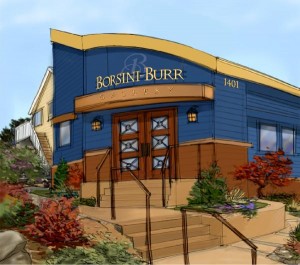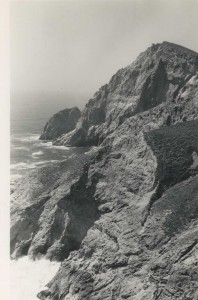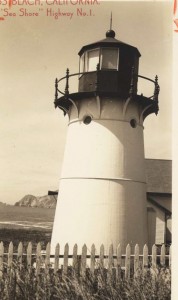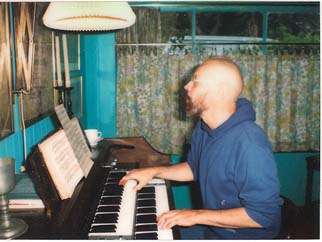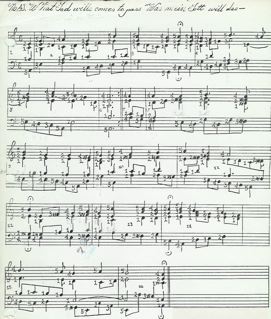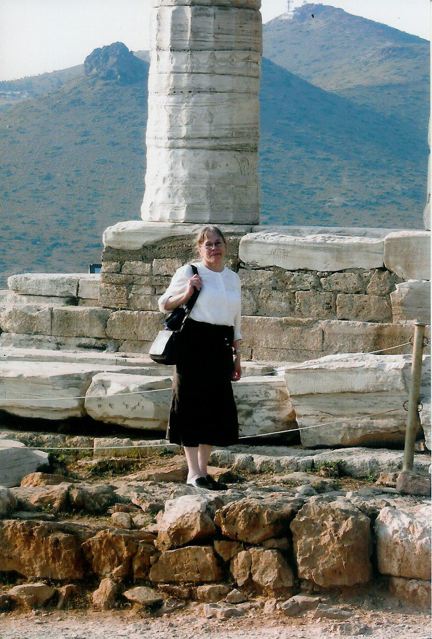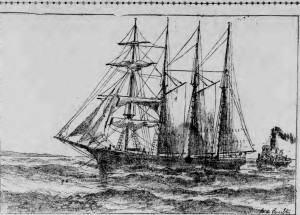
This week: Borsini-Burr Gallery Brings Art to Montara-By-The-Sea
Coastside WWII: “We did see lots of convoys, army trucks,” says Elaine Martini Teixeira,
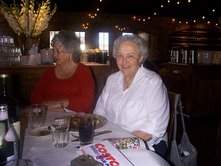 a child at the time. Elaine lived with her family in Moss Beach near Sunshine Valley Road (the lovely “connector” road between Montara and Moss Beach.) Dad owned a bar frequented by the sailors at the nearby naval station. Mom took care of her children and helped her husband.
a child at the time. Elaine lived with her family in Moss Beach near Sunshine Valley Road (the lovely “connector” road between Montara and Moss Beach.) Dad owned a bar frequented by the sailors at the nearby naval station. Mom took care of her children and helped her husband.
“I guess the military men came down from SF, on their way to Fort Ord in Monterey. Sometimes only a few drove by, but often, there was a very long convoy, and they had the right of way,” explained Elaine.
“You did not get in between the vehicles. So, if we were coming on to the main road, Highway 1, from a side street, such as we did from our garage on Sunshine Valley Road, we had to wait for the convoy to finish, and it could be a long wait, maybe as long as 15-20 minutes. If you saw them coming, the best thing to do was to get out on the road, ahead of them.”
“There were mainly trucks,” remembered Elaine, “covered with canvas tops, with soldiers in the back, and an occasional jeep, in between. Some vehicles were around because they were stationed at local military installations, such as the airfield and Coast Guard in Princeton.
“On the coast road, at Devil Slide, there was a small army post up on a mountain top. You could see it from the highway. It was rather small; I believe it was there to track airplanes. There was a long narrow stairway leading from the road to the building. I have no idea how the men walked up and down that steep stairway without falling into the ocean, especially if they had been out celebrating!
It was there for several years after the war, and you can still the foundation of the structure. My then future sister-in-law, Hazel Dooley, married one of the fellows who was stationed there, O. B. Dooley.”
Top Photo: (At far right Elaine Martini Teixeria with sister Loretta.)
“
A Little Old Moss Beach-Montara Story For You
I wrote this in 1977. The story was researched at the San Mateo County History Museum.
While Jurgen F. Wienke lay awake, staring at the ceiling, wife Meta dozed peacefully beside him. Instead of sleeping, Wienke, who built the fashionable Moss Beach Hotel overlooking the gray-blue Pacific, reflected on recent happenings at his resort.
It was the 1890s, and famous scientists often arrived to study the remarkable marine plant life there.
Why only last weekend, Jurgen was thinking, David Starr Jordan, the first president of Senator Leland Stanford’s university in Palo Alto, signed the hotel register.
Jurgen, who enjoyed the title of “Mayor of Moss Beach,” glowed with pride. He knew he had reached the pinnacle of local success when his most prominent guests braved a twisting mountain road to reach his resort near the cliffs of beautiful Moss Beach.
As the Mayor contemplated the long hours of dedicated work, he thought he heard gunfire above the sound of the crashing waves. In a split second his mind returned from reverie to the present. What was that?
A ship’s horn blared in the distance. Curiosity fully aroused, Wienke bounced out of bed, and without disturbing his still-sleeping wife, changed into outdoor apparel. He tip-toed past daughter Lizzie’s bedroom and slipped out the front door.
It was dawn.
Once outside, Mayor Wienke listened for more clues. As he walked briskly among the rows of cypress trees he had planted, he remembered nourishing them through several periods of drought. Again, the sound of a ship’s horn jarred Wienke’s thoughts back into the present.
He glanced out to sea but the fog concealed anything that might have been there. Then, that sound again, the sound of a ship’s horn. This time he went back to the hotel, mounted his horse, and rode right toward the sound.
He rode as far north as the Point Montara Fog Station where several people were running toward the sandy beach. The mayor recognized David Splain and his daughter among them. He called out to David, the fog station’s caretaker, and rode fast to catch up with them.
David Splain told Mayor Wienke that a ship struck the jagged reefs (it was the third to do so at the same place.) Wienke wasn’t surprised. He said that most sailors called Point Montara a dangerous part of this stretch of coast.
And then the thick fog lifted, like a stage curtain, revealing the hazy outline of a schooner stranded on the rocks.
Continue reading “A Little Old Moss Beach-Montara Story For You”
Mikie Benedict’s Montara: Never Cold at “Johann Sebastian” Scranton’s Cold Comfort Farm…
Story by Mikie Benedict
(Photo: Richard Scranton, courtesy Mikie Benedict)
Richard Scranton, known to some of his music-making acquaintances as Johann Sebastian Scranton, lived in a little green house in Montara with a sign over the door: “Cold Comfort Farm�?.
Richard’s ultimate desire was to hand-copy and arrange all 371 of Johann Sebastian Bach’s harmonized chorales so that they could be played on the keyboard. Before Richard died at the age of 75 in 2004, he managed to complete this enormous effort. He called his handwritten manuscript the Ill-Tempered Clavier, a takeoff on Bach’s encyclopedic work, The Well-Tempered Clavier.
(Image: Richard’s Chorale, courtesy Mikie Benedict)
In the front room of Richard’s house on George Street was an instrument which resembled an 18th-century harpsichord, but which on closer inspection proved to be two modern keyboard synthesizers set into a
harpsichord case so cleverly covered with wood-grain paper that it truly fooled the eye.
Richard made digital recordings of his self-taught keyboard playing on this wonderful machine, sometimes painstakingly inputting the chorales note by note and editing out his mistakes.
The floor of “Cold Comfort Farm” was carpeted wall- to- wall with shag scraps cut and glued in a checkerboard pattern, and the walls were densely hung with Richard’s own skillfully-painted facsimiles of European and Asian masterpieces. He made his own curtains and upholstered his own furniture. It was not cold in Richard’s house: Through an innovation best left unexamined, he kept the temperature at about 78 degrees year round.
“Cold Comfort Farm�?, an expression from Shakespeare, was the title of a comic novel by Stella Gibbons published in 1932. The book, set in the fictitious village of Howling, Sussex, was made into a film by the BBC in 1995.
Richard Scranton’s past was mysterious. He had a mother somewhere, but had no contact with her. He had a cat, but she died. At some point he had been a barber and trusted no one else to cut his hair, which finally he shaved off. He had traveled to Europe. He had a library-class record collection and knew everything worth knowing about all kinds of music. He had been a custodian at a local school for a while.
Although he was gentlemanly and courteous to his neighbors, he preferred to be alone most of the time. He cooked for himself in an electric skillet. He
sometimes rode a motorcycle or a bicycle, but did not drive a car.
In late summer of 2004, his neighbors and a handful of acquaintances held a musical memorial service for Richard at Cold Comfort Farm. The building is now used as a studio by the owners, who live next door.
———————————-
Anna, Where Are You? Web Sleuthers Are Looking For You….
Photos: At left, what Anna C. Waters might look like today, [see posts below for more info] and at right, Montara’s Mikie Benedict during a visit to the Greek islands.
I had no idea there was a dedicated group of web sleuthers out there helping to look for the missing. If you want to check out their work on the Anna C. Waters case, click here.
Apologies if I’m wrong, but I believe the head web sleuther in Half Moon Bay is Doug French.
…more coming….
More on Montara’s Artists Mikie Benedict & Howard Gilligan
I was looking into the Fine Arts Colony at Montara when I read in a 1900s issue of the “Coastside Comet” newspaper that a cottage called the Van Suppe Poet & Peasant Cottage was for rent. We’re talking about nearly 100 years ago. The man who took the ad out listed conditions: if you wanted to rent the Van Suppe Poet & Peasant Cottage in Montara you had to be an artist.
The contact person in the ad was Chauncey McGovern.
I knew who Chauncey was–I had come across the locally famous handwriting expert’s name while researching the unsolved murder of wealthy Sarah Coburn in the tiny village of Pescadero in 1919.
The 19th century Austrian composer Franz Von Suppe died in the late 1890s.
I discovered that the Von Suppe cottage still stood and pianist/free lance writer Mikie Benedict lived there. She had inherited the historical home from Howard Gilligan, a unique artist who made Montara his home.
Above: Harold Gilligan self-portrait, courtesy Mikie Benedict.
…to be continued…
1973 Vanishing….Mikie Benedict talks about missing daughter Anna C. Waters…
(Photo: Montara’s Mikie Benedict visited Greece in the summer of 2006.)
After the exchange of a couple of emails, Mikie Benedict reminded me that I had written a piece about the historic cottage in Montara where the pianist still lives. That was in the 1990s. Mikie is the mother of Anna [please read post below]–Anna was five-years-old in 1973, the year she disappeared from her home just south of rural Half Moon Bay. She has never been heard from again.
If alive, today Anna would be 40-years-old. Mikie admits that every minute since Anna vanished, since that cruel day in 1973, every angle has been looked at– and looked at again and again.
“I still have no answers,” Mikie said.
What keeps you looking, I asked Mikie.
“…I’m sure many people think I’m crazy to go on looking for her after 34 and-a-half years. However, when a family friend timidly suggested trying some search tactics through the Internet (which of course was not available when Anna disappeared in 1973), I could hardly say, ‘No,’ as difficult as it was to drag out all that again.”
Mikie, an accomplished pianist, told me that while doing some general research, she was excited to learn that the Internet was responsible for six recent reunions in San Mateo County, with now grown-children seeking their birth parents. Why couldn’t it work for me? she wondered.
It’s an old case, and without leads it had gone cold, but now Mikie says the county has reopened it.
….to be continued…
Meet “Cowboy” Bill Claudino, former Montara resident…
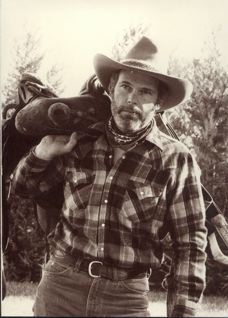 (Photo: This is Bill Claudino…when he was a cowboy…He’s a former county cop and now a top notch Calaveras County supervisor).
(Photo: This is Bill Claudino…when he was a cowboy…He’s a former county cop and now a top notch Calaveras County supervisor).
Bill’s family goes all the way back to the early Coastside; one of his maternal relatives was crowned Chamarita Queen in Half Moon Bay (the famous annual Portuguese festival) and he joked that his family “partied through Prohibiton”–
From Bill, a really good view of old San Gregorio: 
Bill highly recommends Michael Koepf’s book about the fisherman at Princeton: “The Fisherman’s Son”
“There’s fictitious names use in the book,” Bill told me, “but as you soon as you read who’s saying what you know exactly who it is.” Bill knows because he grew up on the Coastside and he knows all the local fishermen very well.
Montara Trivia: The McKims
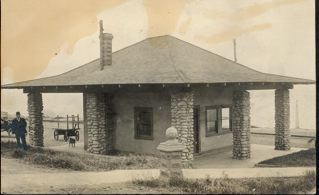 (Photo: Train Station at Montara)
(Photo: Train Station at Montara)
Jeanette E. McKim was 72 when she died at her Montara home in early 1927–her son, Robert McKim, a well known actor, rushed from Los Angeles to be with his mom before she died. Robert’s sister, Marta McKim Fulloni, was the wife of Giuseppe Fulloni, the attache of the American Embassy in Rome–and Robert’s brother, Charles, was living in Mexico at the time.

